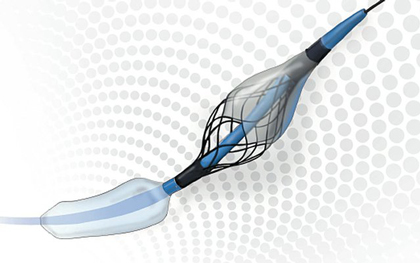TAVR has consolidated as an increasingly valid alternative to treat failed surgical aortic valve bioprostheses.

One of the major challenges it presents is patients with small annuli treated with a surgical bioprosthesis.
There is little data available about this scenario. A few observational studies have shown what appears to be a hemodynamic advantage of self-expanding valves (SEV) over balloon-expandable valves (BEV).
A randomized, prospective, controlled study was carried out comparing BEV SAPIEN (3/ULTRA from Edwards Lifesciences) vs SEV Evolut (R/PRO/ PRO+ from Medtronic) in patients with a small annulus receiving a bioprosthesis with ≤23 mm annulus or with ≤21 mm internal diameter.
BEV were 20 or 23 mm and SEV were 23 mm or 26 mm.
Primary end point was maximal and mean residual gradient, prosthetic mismatch (PPM) or moderate / severe aortic regurgitation at 30 days, assessed by eco-Doppler.
102 patients were randomized, but only 98 were included, seeing as two died prior procedure and two received medical treatment and no intervention. 46 patients received BEV, and 52 SEV.
Mean age was 80, nearly half were men and there were no differences in comorbidities. Kidney function deterioration occurred in 45% of patients and STS was 5%.
Valves most frequently failed were the 21 and 23 mm, followed by 19 and 22 mm.
Read also: Surgical Bioprosthesis Deterioration: Is the Valve-in-Valve Technique a Good Option?
The most common dysfunction was stenosis (66.7%), the rest was regurgitation, and bioprosthesis failure was diagnosed 11 years after surgery.
Left ventricular ejection fraction was 58%, AVAO 0.93 cm2 and gradients were 70/43 mmHg.
The approach was transfemoral in 90% of patients. There were no differences in pre or post dilation and annulus fracture was more frequent in the BEV group (30% vs. 13% P=0.04).
Procedure was successful in all patients.
SEV patients had lower maximal and mean gradient (15±5 mmHg vs 23±8 mmHg P<0.001 and 28±16 vs 40±13 P<0.001), a tendency toward lower severe PPM (44% vs 64% P=0.07) and there was no moderate / severe regurgitation. 55 patients (27SEV and 28BEV) underwent invasive valve hemodynamic evaluation during the procedure, with no differences in mean and peak transvalvular gradients between both groups.
Read also: Left Atrial Appendage Closure Is Safe with the New Devices.
At 30 days there were no differences in mortality, stroke, MI, major bleeding (or life-threatening bleeding) need for pacemaker implantation or major vascular complications.
Conclusion
In patients with failed small bioprosthesis, ViV with SEV was associated with improved valve hemodynamics assessed by echocardiography. There were no differences between the groups in intra-procedural hemodynamics or 30-day evolution.

Dr. Carlos Fava.
Member of the Editorial Board of SOLACI.org.
Original Title: Balloon- vs Self-Expanding Valve Systems for Failed Small Surgical Aortic Valve Bioprostheses.
Reference: Josep Rodés-Cabau, et al. J Am Coll Cardiol 2022;80:681–693.
Subscribe to our weekly newsletter
Get the latest scientific articles on interventional cardiology





